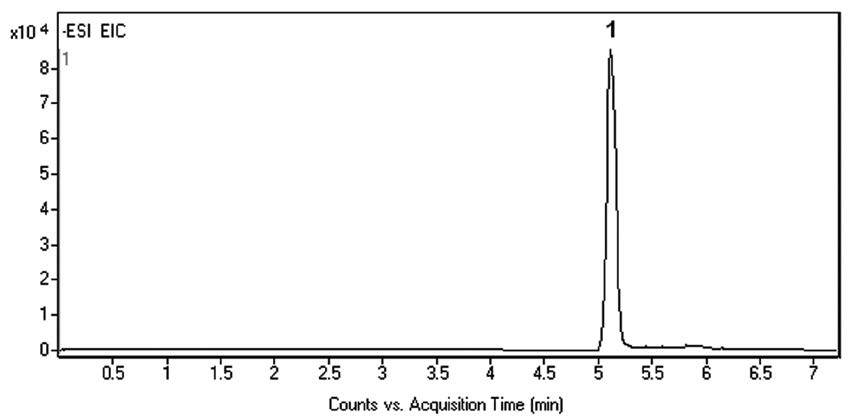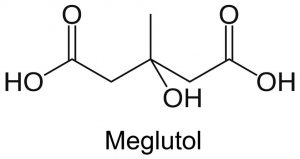Important Biomarker for Diabetes and HMG Disorder is well retained with HPLC.
A selective, specific, and sensitive HPLC method with LCMS Analysis has been developed for the determination of 3-hydroxy-3-methylglutaric acid (a.k.a. Meglutol) in urine samples. The method can be also used in the analysis of plasma samples after precipitation of plasma proteins with Acetonitrile. The retention was achieved using a Cogent Diamond Hydride Column.
This method can be used for screening of large numbers of urine or Plasma Samples, due to simple Sample Preparation and Rapid Equilibration of the Column even when gradient analysis is used.


Peak:
3-hydroxy-3-methylglutaric acid 161.0455 m/z [M-H]–
Method Conditions
Column: Cogent Diamond Hydride™, 4μm, 100Å
Catalog No.: 70000-15P-2
Dimensions: 2.1 x 150 mm
Mobile Phase:
—A: DI H2O / 10 mM Ammonium Formate
—B: 95% Acetonitrile / 5% DI Water / 10 mM Ammonium Formate (v/v)
Gradient:
| Time (minutes) | %B |
| 0 | 95 |
| 1 | 95 |
| 5 | 30 |
| 7 | 30 |
| 8 | 95 |
Post Time: 3 minutes
Injection vol.: 1 μL
Flow rate: 0.4 mL/minute
Detection: ESI – NEG – Agilent 6210 MSD TOF Mass Spectrometer
t0: 0.9 minutes
Note: When a set of plasma samples were analyzed, the concentrations of 3-hydroxy-3-methylglutaric acid were significantly higher in diabetic patients than those of healthy controls. For this reason it was important to develop a reliable Analytical Method for the analysis of this Compound. The increased level in urine of this metabolite is also observed in an inborn disease 3-hydroxy-3-methylglutaric Aciduria. Early detection is crucial for successful treatment.

Attachment
No 233 3-Hydroxy-3-Methylglutaric acid HMG in Urine.pdf 0.2 Mb Download File

